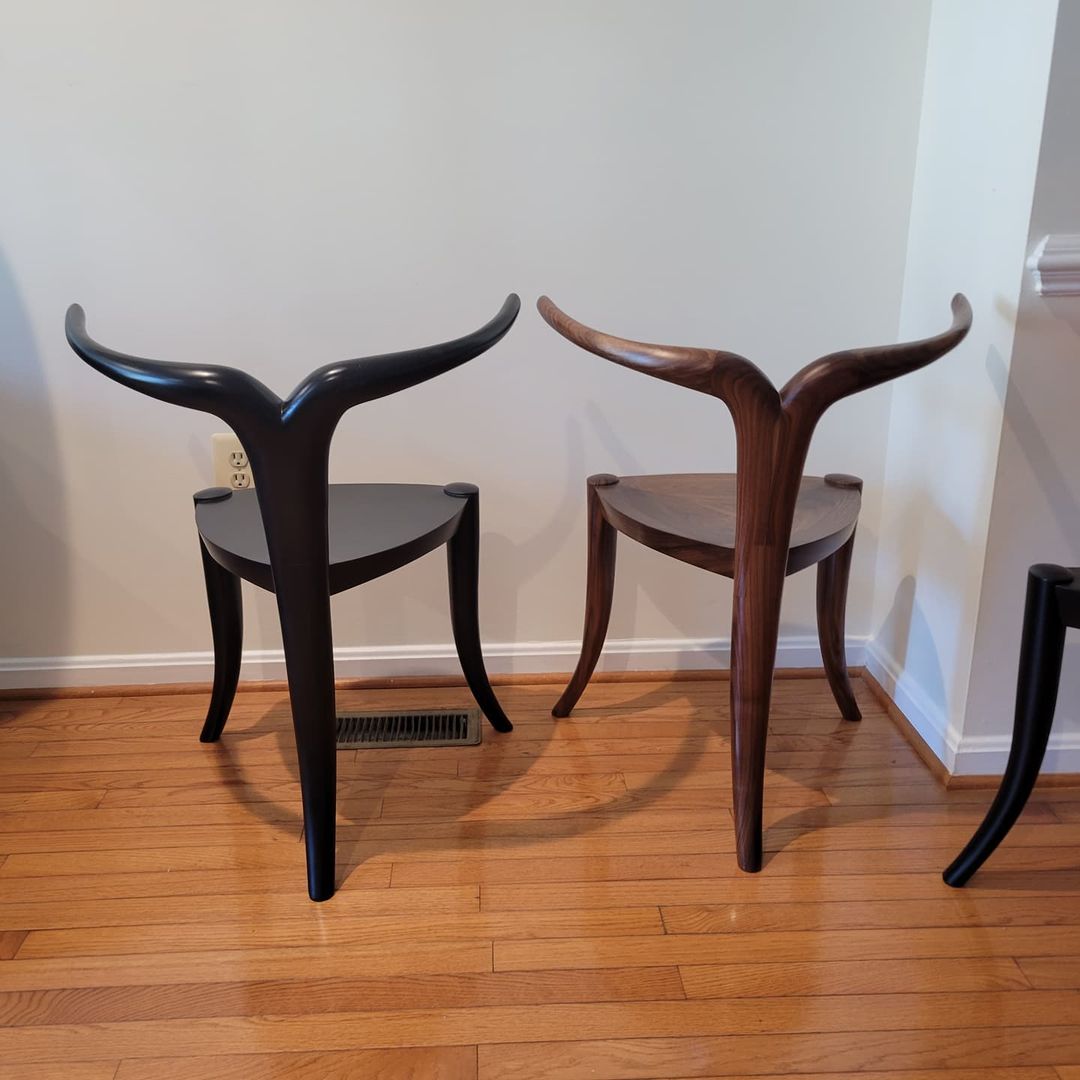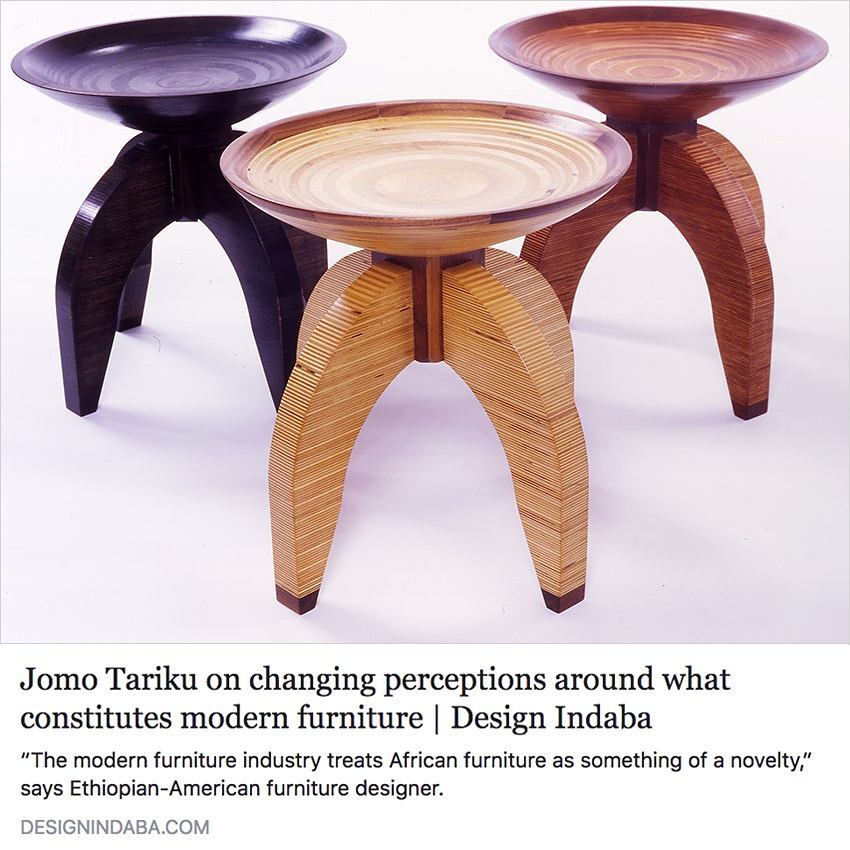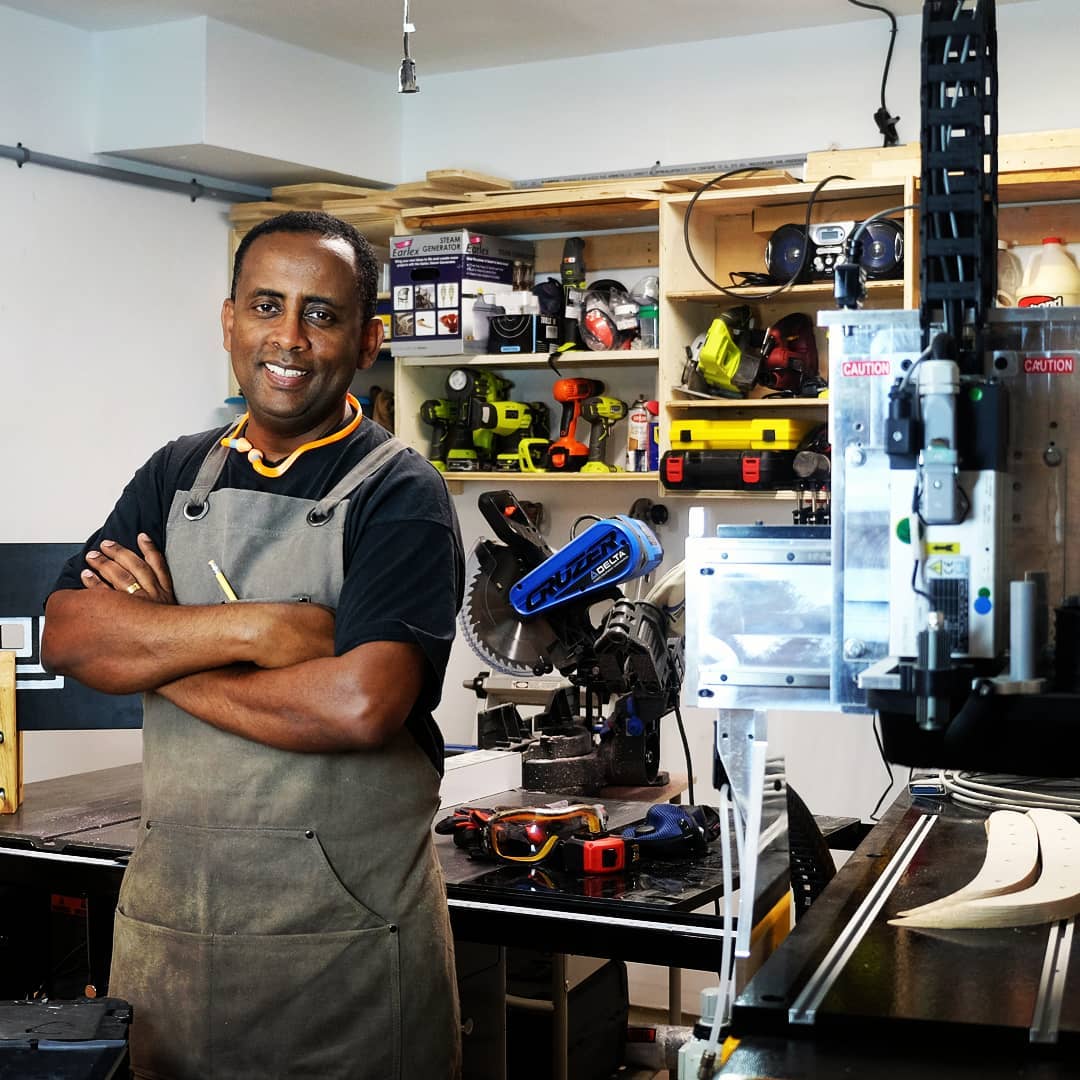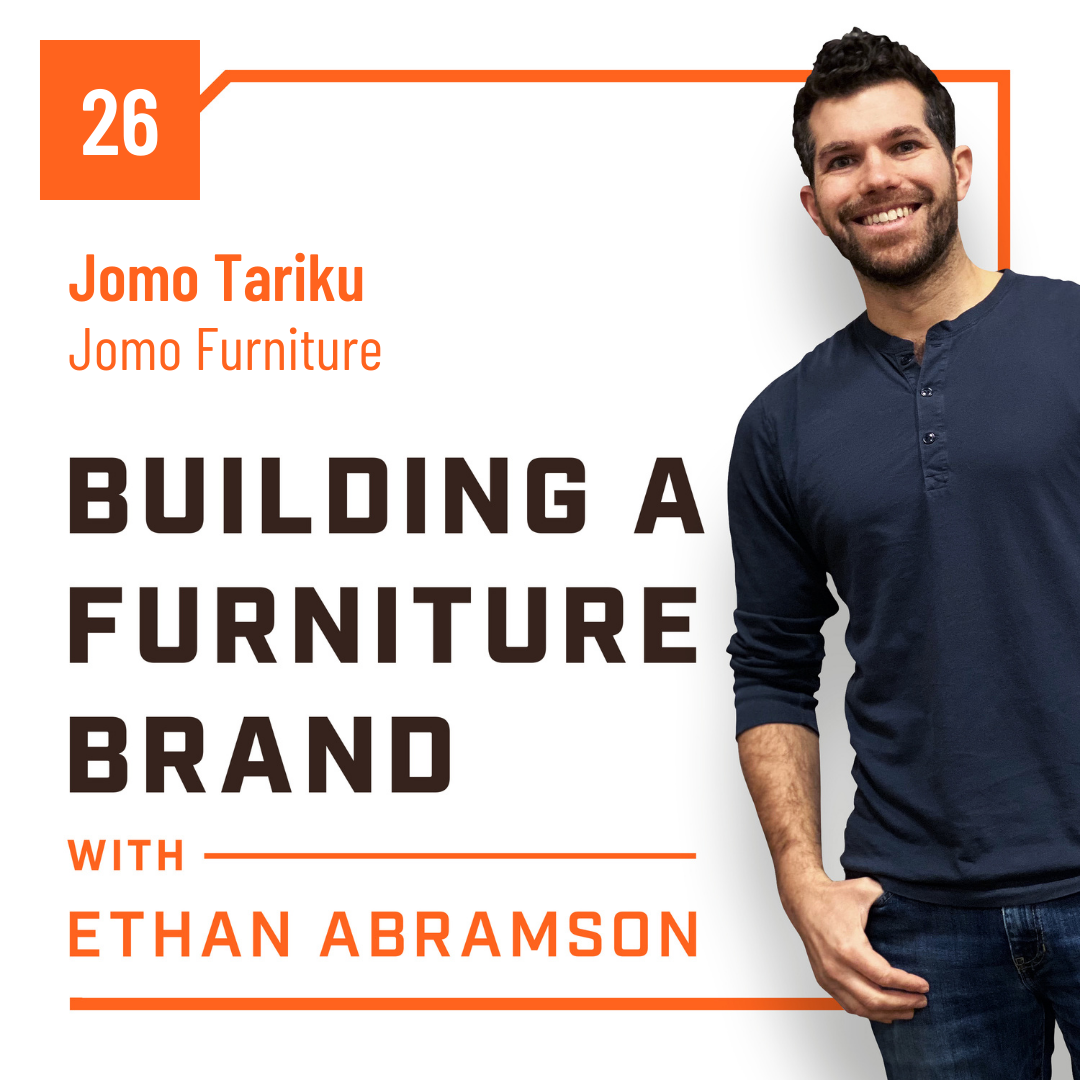The Second Time Around with Jomo Tariku of Jomo Furniture
Welcome to Building a Furniture Brand with Ethan Abramson, the show that talks about the business behind the furniture business. In this episode, Ethan sits down with Jomo Tariku, owner of the Springfield, Virginia-based furniture company Jomo Furniture.
This company is Jomo’s second run at having his own furniture company. He is going through all of the fiscal trials that it takes to re-establish a shop, set up material lines, find employees, and all other aspects of owning a business.
However, he is in the process of showcasing his furniture in media outlets, negotiating with museums to have his pieces featured in permanent collections, and attending many famous events. All of these accomplishments are based on the reputation of his first furniture company.
Back to the Beginning
Jomo’s furniture journey began while attending high school in Ethiopia. At the time, his father put Jomo and his younger brother into an apprenticeship at a woodshop during two summer breaks. An experience he was not upset about as it gave him an excellent reason to get out of the house as a kid.
The shop Jomo worked at was small, but he was always so excited to see the products that the owner could create. He adds that some of the tools intimidated him as a child, including a bandsaw from the 40s that was so large it couldn’t even fit inside the shop.
Jomo and his brother did most of the work with their hands, such as finishing and sanding, as they were not allowed to touch the machines. The shop owner was also an artist and would teach the boys how to paint and draw when he had spare time.
Years later, when Jomo came to the United States to attend the University of Kansas, a professor convinced him to study industrial design. His core study and thesis were based on African furniture because he was curious why he never saw a modern line of African furniture anywhere.
Over the years following his time in university, Jomo worked in several different places, always sketching the ideas that he developed in school. Then in 2000, Jomo, his brother, and some friends opened a design studio in Alexandria, Virginia, that covered many aspects of web design, video editing, and graphic design. The design side of the company funded the furniture side of the company, all of which was based on African themes and Jomo’s modern interpretation of African design concepts.
Unfortunately, they retired the business, partially due to the economic crash of 2008, and Jomo moved through several different professions afterward. Eventually, in 2015, a book publisher based out of London who was working on a book about African design reached out to Jomo, which led to him attending Dubai Design Week representing Ethiopia. He took that opportunity to prototype conceptual chair designs which were received incredibly well. This sudden resurgence of interest led Jomo to rethink his plan and got him to where he is today.

Creating his Collection
Ethan notes that with his current business, Jomo does not create custom pieces for his clientele. Instead, he creates collections that capture his customers’ imaginations, and Ethan asks where Jomo gets his inspiration. Jomo explains that his inspiration came from his time in university, where he discovered a gap in the representation of African design.
“The best place to hang out when I was on campus was always at the art and design library. Back then, I’m talking about the early 90s. There was no Instagram. So I would go through books and magazines that I’d never seen growing up in Ethiopia. I was fascinated by all these publications, but what they kept telling me was that we, as Africans, and our design aesthetic and our design thinking were missing. As an industrial designer, you’re a problem solver. And you look at that as a problem to solve.
I’m opening up a totally new market for me and people like me. I wouldn’t say I’m completely out of building custom things. But what I have is a catalog of things that I have brought from the mindset of an African designer, bringing my culture, my heritage, the landscape, the wildlife, everything that says what African-ness means to me, is what I pour into this design.”
- Jomo Tariku
Over the last several years, in particular, Jomo notes that he has been fortunate to travel and check out major furniture shows worldwide. Throughout all of them, he has seen this gap of missing potential that keeps him secure in the knowledge that he is creating his niche in the industry.
He acknowledges that it can be scary not to have a traditional woodshop where people come to him with their requests. However, because Jomo got into the industry through a design route, he explains that he didn’t know how a custom wood shop operated from the inside. He has always had the mindset of creating and expanding his own market instead.

Keeping the Vision while Selling Furniture
Ethan inquires about the challenge of keeping the vision and inspiration from his African designs accurate while creating furniture that people are interested in purchasing for their homes. Jomo explains that his furniture is familiar and fits in many contexts.
“I have a stool based on a headdress found in most East African countries, and people from around there will look at the stool and say that thing looks like that headdress thing I’ve seen or people who’ve traveled to East Africa would actually say that looks familiar. That stool is a very modern interpretation of that.
It fits in with a gamut of design. It could fit in just fine within your mid-century home just as well as if you have a collection of African art and you want to incorporate it with that. I use a lot of simple lines. Some of them are very organic, like my Niala chair, which is based on an antelope horn. And then you have the very industrial-looking series of stools with the height adjustability that are made out of Baltic birch plywood.”
- Jomo Tariku
Since his business is currently a small operation, Jomo tries not to focus too heavily on materials, as he primarily utilizes wood. His end goal is to expand into the industrial design side of himself and experiment using different materials, but not until his business grows to the point where it is financially viable to do so.

Learning from the Past
One of the benefits of the time Jomo spent on his previous business was learning from his mistakes. He explains that in his last company, he ran an office, had a studio and a showroom, and was spending a lot of money on all of those spaces without earning enough to replenish the funds being spent.
“What I’ve done now is focus my presence online. I get on podcasts, in interviews, and magazine interviews, but I’m not ashamed to say, “yes, I might be trying to present a bigger image, but I work out of my basement, and I outsource some of my work.” The goal is to have my own shop, but I want it to grow organically because I remember the pain of closing a business. So I do things within reason.”
- Jomo Tariku
While Jomo sometimes thinks that he is very conservative, he remembers the debt he had to pay off over the years from when he closed his first business. It was a very stressful time for him, and he is happy with the size of his business right now, and he is looking forward to its continued organic growth.
Ultimately, he does not want to be the next IKEA. Still, he would like to see his business grow to a 5-10 person company, and most importantly, he wants to play a role in introducing a new design vocabulary based out of Africa. Jomo believes that the timing is perfect for someone like him to break into the industry right now.
“I am an immigrant to the US. I came pretty much empty-handed. What my family instilled in me was about hard work and never giving up. If you fall down, pick yourself up and try again. One thing I was 100% sure about my work was that I had good design. I knew the market had a gap to fill in, and to walk into it was just a matter of time.
It is kind of slightly unfortunate it took this long, but you don’t get everything you wish for in life. So that it is happening now and not ten years later is what makes me happy at the moment. Hard work cannot be replaced by wishful thinking and sitting down and doing nothing.
As a designer and every good designer will tell you this, make sure your portfolio is fantastic, hands down. It has to wow people. You cannot have a one-hit wonder and expect to be climbing up the ladder of being collected by people. It just rarely works like that. Even if you have the connection and you finally make it, if all you have is one design to fall back on, you’re in trouble.”
- Jomo Tariku
Website: https://www.jomofurniture.com
Instagram: @jomofurniture

